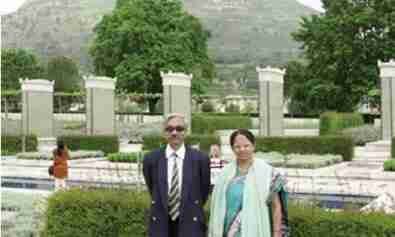During our first trip to Europe in May 2013, our family commenced the visit from the Italian battlefields where my two centuries old unit, 14 Punjab (Nabha Akal), the erstwhile Nabha Akal Infantry before independence, had fought with distinction in the Italian campaign during World War II. After a day’s stay in Rome, we travelled by train to Cassino, located 139 km away, enjoying the scenic beauty of the countryside over the one hour 40 minutes train journey.
On our request, the defence attache in the Embassy of India, Rome had tied up our meeting with the Mayor of Cassino, Mr Guiseppe Golini Petrarcone for that afternoon, 2 May. This was the day the German forces in Italy had surrendered to the Allies in 1944.
We arrived at Cassino railway station at 10.30 a.m., and contacted the secretary to the Mayor, but as she did not speak English, their translator Ms Ida Mignanelli spoke to us. She was surprised to learn that we had arrived by train, were strangers to the place and had no knowledge of the location of places in Cassino we intended to visit. She asked us to ring again after 15 minutes, which we did. We had planned to hire a taxi for the day, but she told us that a vehicle would pick us up in 20 minutes to take us around. Sure enough, a black polished car, chauffeured by a smart policeman arrived soon after. He did not speak English either, but we managed to communicate through some commonly used words and sentences in Italian which I had noted earlier! As we were to meet the Mayor at 3 p.m., we had a few hours to travel around.
We drove straight to the Cassino War Cemetery, the largest WW II cemetery in Italy. During the early months of 1944, Cassino had witnessed some of the fiercest fighting of the Italian Campaign, the town itself and the dominating Monastery Hill proving the most stubborn obstacle encountered in the Allied advance towards Rome. There are 4,271 Commonwealth servicemen buried or commemorated here, out of which 431 are Indian soldiers. The Cassino Memorial, which stands within the cemetery, commemorates over 4000 men who died while fighting, of which 1438 were Indians. We paid homage to our two unit martyrs and other Indian soldiers who made the supreme sacrifice and signed the visitor’s book. It was a touching experience, walking through the cemetery. Some of the Indian martyrs were less than 20 years of age! It was nice to talk to some of the visitors from different countries who had come to remember their dear ones. We later drove up to the 1700 feet Monastery Hill which overlooks Cassino, with the beautiful St Benedict monastery on top. Indian troops had fought valiantly during the Battles of Monte Cassino with other Allied soldiers in attempts to capture the formidable German defences on the impregnable Monte Cassino feature. On our way up, we met a group of Polish tourists singing ‘carols’ and lighting lamps, while offering prayers for the departed souls in the Polish cemetery.
On our way back, we walked through the historic Cassino town that had borne the brunt of the fighting during the war. The Mayor received us warmly in his office in spite of his busy schedule. We talked about the Indian Army’s contribution during the war and the places along the eastern coast of Italy where our unit had fought bravely, some of which we intended visiting later. We thanked him for his very gracious hospitality, and presented him with some Indian sweets, and a small Madhubani painting of Lord Krishna made by my wife.
Ms Ida later mentioned that they were expecting us to arrive by car from Rome that morning. Since we had come all the way from India to visit Cassino and were new to the place, the Mayor decided to send his own car. Later, we visited Forli, a village along the eastern coast, to pay homage to fifty martyrs of 14 Punjab, commemorated in the Indian Army War Cemetery.
We were surprised to find nine more graves of Nabha Akal Infantry, whose names did not appear in the list maintained by our unit! This was the first time that anyone from the unit had come here. On return to India, I promptly sent a letter to the Mayor of Cassino expressing our gratitude for his exceptional kindness and courtesy, along with a few photographs I had taken in his office. Indeed, it was a memorable visit for me and my family.
Col Vijay Gidh is a veteran from 14 Punjab and is settled in Pune.


